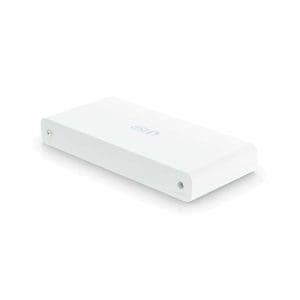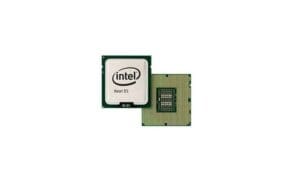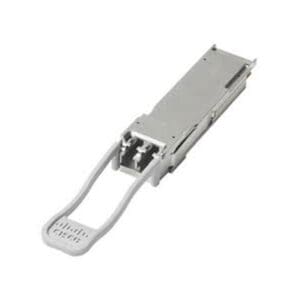Security Challenges and Solutions for Network Switches
Introduction
Network switches are the backbone of modern IT infrastructure, facilitating the seamless flow of data across various devices and systems. However, with great connectivity comes great responsibility. Security challenges, such as VLAN hopping and MAC address spoofing, pose significant threats to network integrity. This article delves into these security risks, exploring advanced security features and best practices to mitigate them. Let's dive in and understand how to protect your network switches effectively.
Understanding VLAN Hopping
What is VLAN Hopping?
VLAN hopping is a technique used by attackers to gain unauthorized access to different VLANs within a network. By exploiting vulnerabilities in the switch configuration, attackers can traverse between VLANs, potentially accessing sensitive data or disrupting network operations.
How Does VLAN Hopping Work?
VLAN hopping can occur through two primary methods: switch spoofing and double tagging. In switch spoofing, an attacker tricks the switch into believing it is another switch, thereby gaining access to multiple VLANs. Double tagging, on the other hand, involves inserting a second VLAN tag into the Ethernet frame, allowing the attacker to send packets to a different VLAN.
Mitigating VLAN Hopping
Advanced Security Features
To combat VLAN hopping, network administrators can employ several advanced security features. One such feature is VLAN Trunking Protocol (VTP) pruning, which limits the propagation of unnecessary VLAN traffic. Additionally, Dynamic Trunking Protocol (DTP) can be disabled to prevent automatic trunking between switches, reducing the risk of unauthorized VLAN access.
Best Practices
Implementing best practices is crucial for mitigating VLAN hopping. Regularly updating switch firmware and applying security patches can help close known vulnerabilities. Moreover, configuring switches to use private VLANs can isolate traffic within a VLAN, preventing unauthorized access.
"VLAN hopping can be a significant threat to network security, but with the right configuration and best practices, it can be effectively mitigated."MAC Address Spoofing
What is MAC Address Spoofing?
MAC address spoofing involves altering the Media Access Control (MAC) address of a network device to impersonate another device. This technique can be used for various malicious purposes, including bypassing access controls and launching man-in-the-middle attacks.
How Does MAC Address Spoofing Work?
Attackers can use software tools to change the MAC address of their device, making it appear as a legitimate device on the network. This can fool network switches and other security mechanisms, allowing the attacker to gain unauthorized access or intercept network traffic.
Combating MAC Address Spoofing
Advanced Security Features
To counter MAC address spoofing, network administrators can leverage advanced security features such as MAC address filtering and port security. MAC address filtering restricts network access to devices with predefined MAC addresses, while port security limits the number of MAC addresses that can be associated with a single port.
Best Practices
Implementing best practices is essential for combating MAC address spoofing. Regularly monitoring network traffic for unusual activity can help detect potential spoofing attempts. Additionally, using 802.1X authentication can ensure that only authorized devices are allowed to connect to the network.
"MAC address spoofing can be a silent but deadly threat. By employing advanced security features and best practices, network administrators can significantly reduce the risk."Other Security Challenges
ARP Spoofing
ARP (Address Resolution Protocol) spoofing is another common security challenge. Attackers can send falsified ARP messages to associate their MAC address with the IP address of another device, leading to man-in-the-middle attacks.
DDoS Attacks
Distributed Denial of Service (DDoS) attacks can overwhelm network switches with a flood of traffic, rendering them inoperable. These attacks can disrupt network services and cause significant downtime.
Advanced Security Features for Network Switches
Access Control Lists (ACLs)
Access Control Lists (ACLs) can be used to filter network traffic based on various criteria, such as source and destination IP addresses, protocols, and ports. ACLs help in controlling access to network resources and preventing unauthorized traffic.
Intrusion Detection and Prevention Systems (IDPS)
Intrusion Detection and Prevention Systems (IDPS) can monitor network traffic for suspicious activity and take automated actions to prevent potential threats. These systems can detect and block attacks such as ARP spoofing and DDoS attacks.
Best Practices for Network Switch Security
-
Regular Updates and Patching. Keeping network switches up to date with the latest firmware and security patches is crucial for protecting against known vulnerabilities. Regular updates help in addressing security flaws and improving overall network security.
-
Network Segmentation. Network segmentation involves dividing the network into smaller, isolated segments. This practice can limit the spread of malware and reduce the impact of security breaches. By segmenting the network, administrators can better control and monitor traffic within each segment.
-
Implementing Strong Authentication. Using strong authentication methods, such as multi-factor authentication (MFA), can enhance network security. MFA requires users to provide multiple forms of identification, making it more difficult for attackers to gain unauthorized access.
Analogy of Risk and Reward
While network switches face significant security challenges, the thrill of overcoming these obstacles can be likened to the excitement of playing casino slots. Just as network administrators strive to mitigate risks and protect their networks, players at Jolly Queen slot seek the thrill of hitting the jackpot. The adrenaline rush of securing a network against threats like VLAN hopping and MAC address spoofing is not unlike the anticipation of spinning the reels and hoping for a big win. So, whether you're safeguarding your network or enjoying a game of slots, the pursuit of success and the thrill of the unknown are universal experiences. Why not take a break from the world of network security and try your luck at the game. You never know, you might just hit the jackpot.
Conclusion
Network switches play a vital role in modern IT infrastructure, but they are not without their security challenges. VLAN hopping, MAC address spoofing, ARP spoofing, and DDoS attacks are just a few of the threats that network administrators must contend with. By employing advanced security features and implementing best practices, these risks can be significantly mitigated. Regular updates, network segmentation, and strong authentication are essential components of a robust network security strategy.
As technology continues to evolve, so too will the security challenges facing network switches. Staying informed and proactive is key to protecting your network and ensuring its integrity. By understanding the threats and taking the necessary precautions, you can safeguard your network switches and maintain a secure and reliable IT infrastructure.
"In the ever-evolving landscape of network security, staying ahead of the curve is not just an option—it's a necessity."With the right tools and strategies in place, you can navigate the security challenges associated with network switches and protect your network from potential threats.
Newsletter & Get Updates
Sign up for our newsletter to get up-to-date from us





